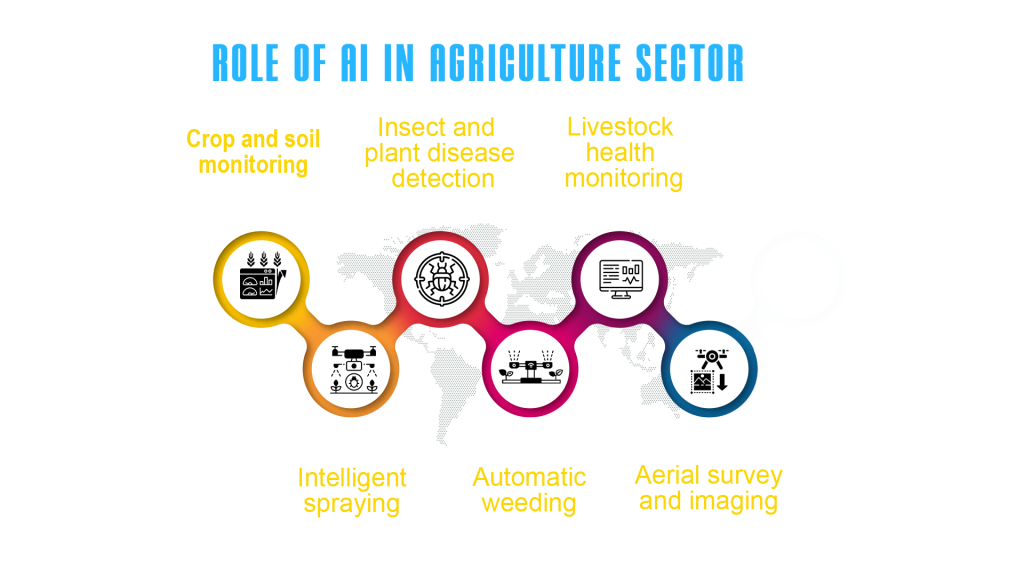How AI to Solve Traditional Farming Problems?
Welcome everyone! Today, we’re diving into the fascinating world where a booming global population meets the ever-changing landscape of agriculture. With the number of people on the planet expected to skyrocket in the coming years, the pressure to produce more food is mounting. This has led to two main approaches: expanding farmland and using technology to boost productivity. However, with limited land, labour shortages, climate change, and soil fertility issues, modern farming is being forced to innovate.
Despite many tech advances aimed at increasing efficiency and yield, the transformative power of artificial intelligence in agriculture often goes overlooked. Join us as we explore this crucial topic and uncover how AI could revolutionize farming’s future. Don’t forget to subscribe for more insightful content, and let’s explore the intersection of technology and agriculture!
The Role of AI in Agriculture
Agriculture involves many manual processes and stages, and AI can greatly complement existing technologies by streamlining both complex and routine tasks. By collecting and analyzing extensive data, AI can determine the best actions to take and, in combination with other technologies, can even automate these actions. The synergy between AI and agriculture offers numerous benefits across various processes:
Crop and Soil Monitoring
Crop health relies heavily on soil nutrients, which are crucial for both yield quantity and quality. Monitoring crop growth stages is essential for optimizing production, requiring a deep understanding of the interactions between crops and their environment. Traditionally, assessing soil quality and crop health depended on human judgment, which could be inaccurate and slow. Now, technology, such as drones equipped with computer vision AI, offers a better solution. These drones can capture aerial images, which AI can analyze to monitor crop health, predict yields, and quickly detect nutrient deficiencies, surpassing human capabilities. These insights allow farmers to take immediate, targeted actions, heralding a new era of precision agriculture.
Insect and Plant Disease Detection
Image recognition technology based on deep learning can now automate the identification of plant diseases and pests. By using image classification, detection, and segmentation, AI models can autonomously monitor and assess plant health.
Livestock Health Monitoring
Animals are a crucial part of our agricultural systems and require more tracking than plants. AI-powered computer vision can count animals, detect diseases, identify unusual behaviour, and monitor critical activities like giving birth. By analyzing video data from cameras and drones, farmers can stay informed about their animals’ health and needs. AI algorithms can determine if animals are drinking, eating, sleeping, or showing signs of illness or behavioural problems.
Intelligent Spraying
AI isn’t just good at detecting agricultural issues; it’s also excellent at preventing them. Drones equipped with computer vision AI can automate and precisely spray pesticides or fertilizers. By recognizing target areas in real-time, these drones operate with incredible precision, reducing the risk of contaminating crops, people, animals, and water sources. While there are challenges, like the need for multiple drones to cover large fields, the precision of AI systems ensures accurate spraying, minimizing collateral damage.
Automatic Weeding
AI-powered robots can identify and eliminate weeds using the same principles they use to detect pests or monitor animal behavior. This reduces the workload for farmers and promotes environmental sustainability by decreasing the need for herbicides. Machine learning algorithms combined with computer vision enable the creation of robots that can automatically weed fields, increasing efficiency and promoted eco-friendly practices.
Aerial Survey and Imaging
AI can analyse images from drones and satellites to help farmers monitor crops and livestock. This means farmers can be immediately alerted if something looks wrong, without having to constantly watch the fields.

Aerial imaging also improves the precision and efficiency of pesticide spraying, ensuring they only go where needed, saving money and protecting the environment.
Produce Grading and Sorting
AI’s usefulness extends beyond cultivation to the post-harvest phase. The same imaging algorithms used to detect defects, diseases, and pests during growth can also sort high-quality produce from the defective or less appealing ones. By inspecting fruits and vegetables for size, shape, colour, and volume, AI automates sorting and grading with remarkable speed and accuracy, outperforming even the best-trained human workers.
As we conclude our journey into the world of AI in agriculture, we’ve seen how far we’ve come from ancient farming tools to today’s cutting-edge AI applications. In a world facing climate change and increasing food demands, AI stands out as a powerful ally in revolutionizing 21st-century agriculture. From boosting efficiency in time, labour, and resources to promoting sustainability, smart resource allocation, and real-time monitoring for healthier produce, AI’s applications are vast. This evolution in agriculture requires a shift in the industry, with farmers’ knowledge translating into AI training. It’s a testament to the enduring spirit of innovation in farming. Join us as we look forward to a future where AI and agricultural robotics play a crucial role in meeting food security challenges and shaping the future of farming for generations to come.
For further assistance, visit our channel and refer the video named

Share This :


Thank you for your sharing. I am worried that I lack creative ideas. It is your article that makes me full of hope. Thank you. But, I have a question, can you help me?